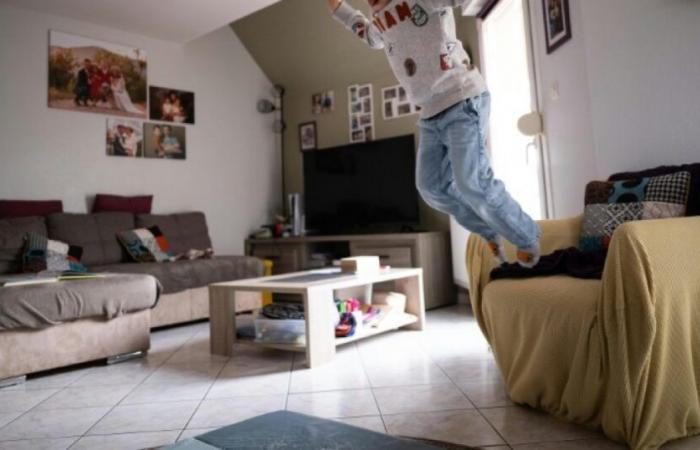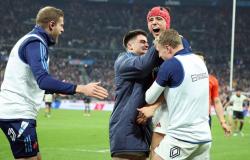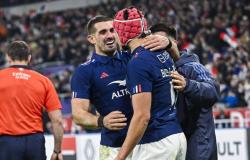“Seeing him do stupid things is a real joy,” says his mother, when eight-year-old Sacha jumps off the sofa.
This Captain America fan is a “superhero”: confined to a wheelchair due to myopathy, he is testing a gene therapy which has given him back his muscles.
“Before, he couldn’t hope to do that,” says Hélène Wilhelm, 35, with a radiant smile.
With Sacha, his four-year-old little sister, Albane, and their father, Edouard, they are one of the ambassador families of the 38th Telethon (November 29 and 30).
“The emblematic disease of the Telethon is Duchenne muscular dystrophy from which Sacha suffers: it was at the origin of the creation of the AFM, the French Association against muscular dystrophy in 1958,” Serge reminds AFP Braun, its scientific director. “We are at a pivotal moment: we finally have a treatment that could change the course of this disease, which until now has been deemed incurable.”
Seeing Sacha running and pedaling with enthusiasm on his bike, we can't imagine him suffering from this serious genetic disease which “affects one in 3,000 boys in France, from the age of two or three”, specifies his pediatric neurologist, Vincent. Laugel.
This “little by little destroys the muscles: children lose the ability to walk, then to breathe.
It also damages the heart”, describes the pediatric head of the reference center for neuromuscular diseases at Strasbourg University Hospital. “We try to help their nutrition, their breathing, to limit the orthopedic consequences… but there is no curative treatment.
A bilingual French-German CE2 student, the blond guy, who loves reading and clowning, goes through physiotherapy sessions and takes, probably for life, corticosteroids which have slowed his growth.
But since the end of 2022, Sacha has been defying fate: research funded by the Telethon gave him access to a pioneering drug, like a Lille and a Londoner, which allowed them to rebuild muscle, without significant side effects.
Five children in total (two received a lower dose) aged six to 10 have since been subjected to a host of tests, cardiac, blood tests, strength measurement, etc.
– Three months of isolation –
Selected on around forty criteria to minimize the risks, they received, inserted into “an ordinary virus”, a “drug gene” which “helps produce dystrophin, a protein allowing muscles to be solid, which is lacking in these sick children,” explains Vincent Laugel.
“For the moment, they are doing better. They are really three astronauts: they went exploring in unknown territory, agreeing to take this risk, even if it is calculated. They are superheroes and they know it “.
Embarked, the family had to isolate themselves three months before the injection, to prevent the boy, whose immune defenses would fall, from contracting the virus.
“I stopped working, Albane stopped going to daycare, Sacha stopped going to school: as I am a teacher, I taught class. Their dad, who continued to work, wore an FFP2 mask. didn't eat with us, he didn't sleep with me,” recalls Hélène.
“But we were so happy that in fact, we could have endured anything. It was a great effort to make,” she says. “We see life differently,” adds her husband.
Presented at two medical congresses, this pioneering treatment will be administered in the first quarter of 2025 to around sixty children in France, the United States and the United Kingdom, with the aim of commercialization in “2027, 2028”, indicates Serge Braun. . It is currently worth several hundred thousand euros.
But children who have already encountered the virus used as a vector – like 30% of the population – and developed antibodies will not be able to benefit from it.
In the United States, the companies Solid Biosciences and Regenxbio are conducting their own clinical trials of gene therapy for this disease.
A third, Sarepta, was authorized to market its treatment on the American market, for certain children.
Sacha is “the heir of 40 years of research where every day, researchers stood in front of their bench, filled their test tubes: we are so grateful to be able to enjoy life thanks to those who fought before us” , says Hélène Wilhelm.
“I can walk better, run, climb stairs… all that,” summarizes the little boy, who will soon take up karate again.






